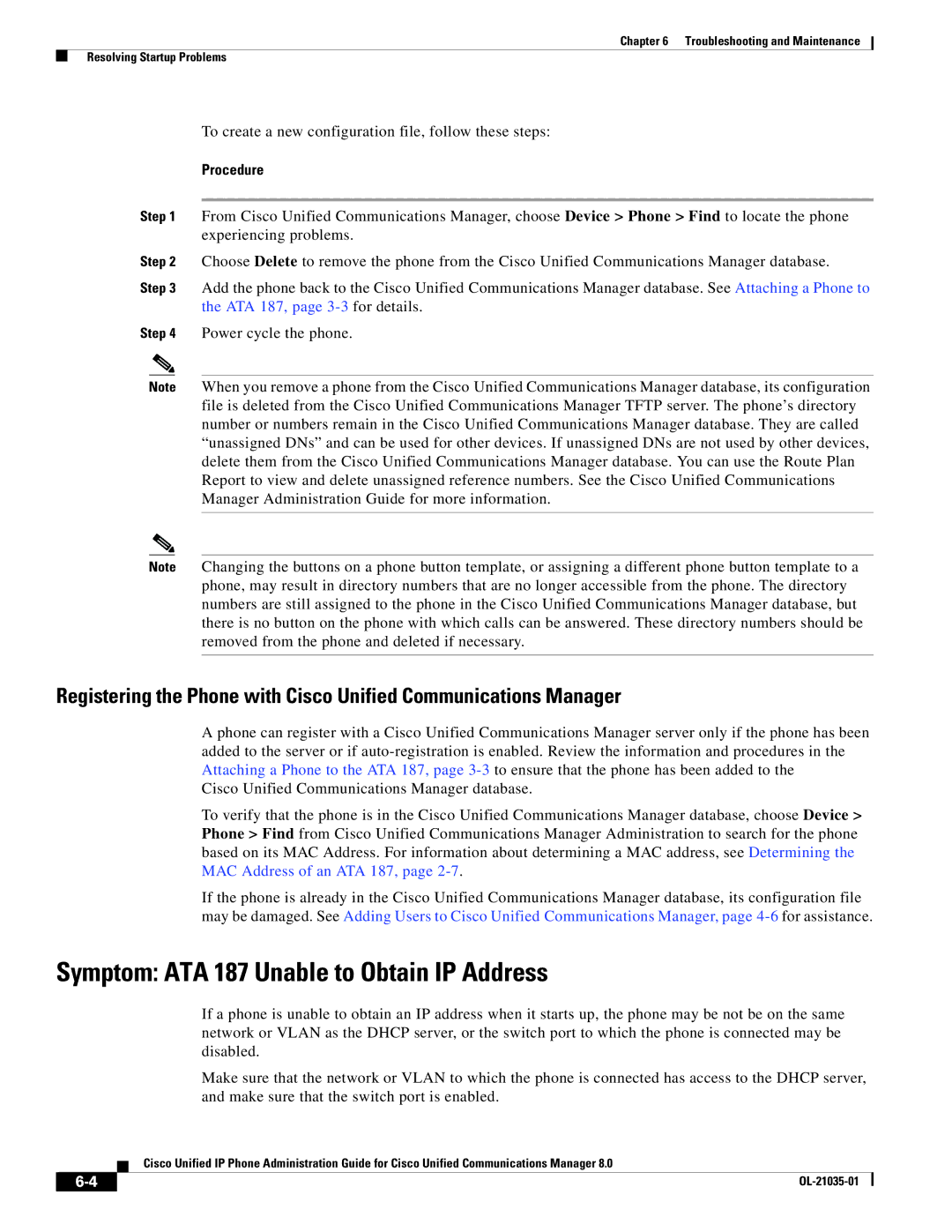
Chapter 6 Troubleshooting and Maintenance
Resolving Startup Problems
To create a new configuration file, follow these steps:
Procedure
Step 1 From Cisco Unified Communications Manager, choose Device > Phone > Find to locate the phone experiencing problems.
Step 2 Choose Delete to remove the phone from the Cisco Unified Communications Manager database.
Step 3 Add the phone back to the Cisco Unified Communications Manager database. See Attaching a Phone to the ATA 187, page
Step 4 Power cycle the phone.
Note When you remove a phone from the Cisco Unified Communications Manager database, its configuration file is deleted from the Cisco Unified Communications Manager TFTP server. The phone’s directory number or numbers remain in the Cisco Unified Communications Manager database. They are called “unassigned DNs” and can be used for other devices. If unassigned DNs are not used by other devices, delete them from the Cisco Unified Communications Manager database. You can use the Route Plan Report to view and delete unassigned reference numbers. See the Cisco Unified Communications Manager Administration Guide for more information.
Note Changing the buttons on a phone button template, or assigning a different phone button template to a phone, may result in directory numbers that are no longer accessible from the phone. The directory numbers are still assigned to the phone in the Cisco Unified Communications Manager database, but there is no button on the phone with which calls can be answered. These directory numbers should be removed from the phone and deleted if necessary.
Registering the Phone with Cisco Unified Communications Manager
A phone can register with a Cisco Unified Communications Manager server only if the phone has been added to the server or if
Cisco Unified Communications Manager database.
To verify that the phone is in the Cisco Unified Communications Manager database, choose Device > Phone > Find from Cisco Unified Communications Manager Administration to search for the phone based on its MAC Address. For information about determining a MAC address, see Determining the MAC Address of an ATA 187, page
If the phone is already in the Cisco Unified Communications Manager database, its configuration file may be damaged. See Adding Users to Cisco Unified Communications Manager, page
Symptom: ATA 187 Unable to Obtain IP Address
If a phone is unable to obtain an IP address when it starts up, the phone may be not be on the same network or VLAN as the DHCP server, or the switch port to which the phone is connected may be disabled.
Make sure that the network or VLAN to which the phone is connected has access to the DHCP server, and make sure that the switch port is enabled.
Cisco Unified IP Phone Administration Guide for Cisco Unified Communications Manager 8.0
| ||
|
